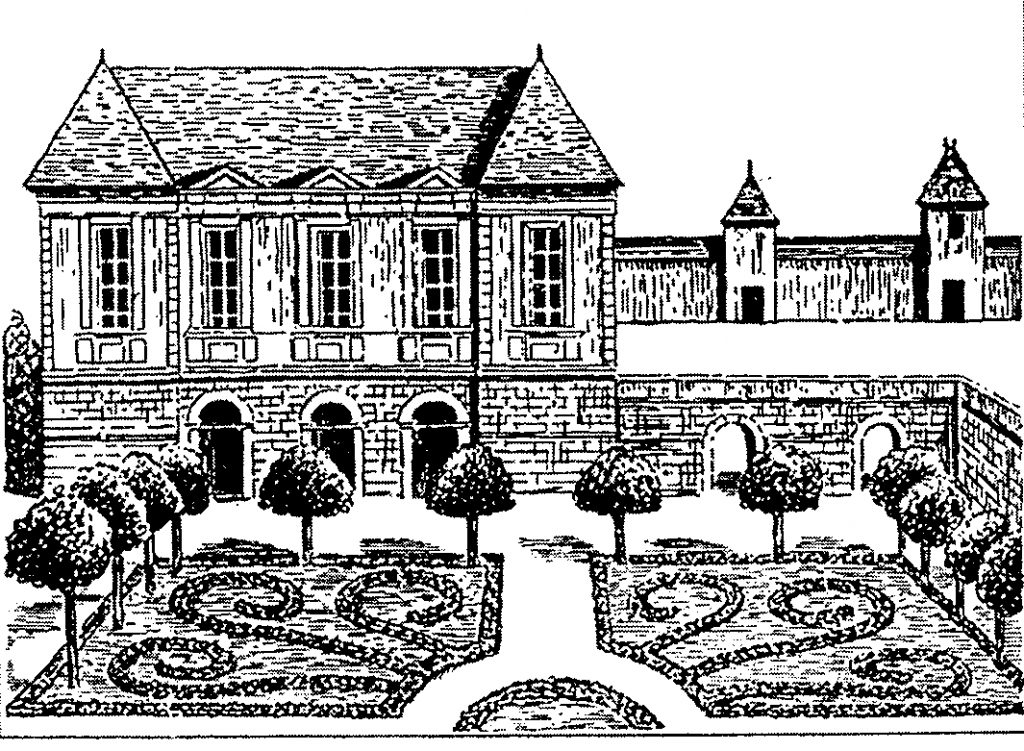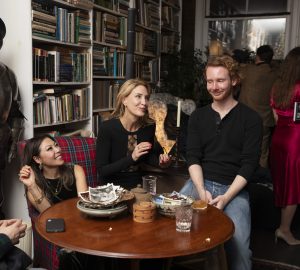Catherine de Vivonne, the Marquise of Rambouillet (1588–1665), brought the salon concept over with her when she moved to Paris from Rome for her marriage to a mediocre French nobleman (salons initially started in Italy.) Catherine was 12 when she married Charles d’Angennes who was 10 years older than her and already suffering a serious decline of health, and apparently had very bad breath too. Poor girl! Initially Catherine did participate in the French court but she slowly started to back out finding it gauche, a clique of bad behavior, shallow thinking and lacking in any style and substance.
In comparison to Italy, France was far behind in the world of culture which is hard to imagine now. They were still recovering from the 37yrs long Wars of Religion and the country was rife with intrigue and resentments. The leaders were course, and quite literally, did not know how to use a fork. And so Catherine started hosting salons in the blue room or chambre bleue, of her home the Hôtel de Rambouillet, rounding up philosophers, scholars, writers, women, artists, deep thinkers and other curious people to participate. There, inside her home, she was able to control the vibe and make the gathering a warm haven of culture.

Unlike at the French Court, Catherine’s salons were more likely to have people from different backgrounds attend and participate in the conversation. And conversation was exactly what was central to Catherine’s salons. Of course, you still couldn’t just decide you wanted to attend one of Catherine’s celebrated evenings; you had to be invited by her. But it seems like her invitations were generous and many people came through her home over the years of 1620-1648. One new innovation that Catherine insisted on is that women and commoners were invited to her salons. This was unheard of in France, this sort of social mixing, but it had longtime consequences for the country.
The French were blown away with her hosting skills and her ability to set the scene for such heady and intellectual talk in a warm and inviting environment, and Catherine’s salons became seen as the epicenter for the advancement of French culture and a homebase for the original members of the French Academy. Founded by Cardinal Richelieu, the chief minister to King Louis XIII, Rambouillet encouraged the original members of the French Academy as they struggled to reconstruct the French language and picked so many of its original members, she’s virtually inextricable from its origins.
Although many a noble Frenchmen of the era owed their advancement her salons, history has largely forgotten Catherine de Vivonne. As noted in the 1910 edition of the Encyclopedia Britannica, “The almost uniform excellence of the memoirs and letters of 17th-century Frenchmen and Frenchwomen may be traced largely to the development of conversation as a fine art at the Hôtel Rambouillet, and the consequent establishment of a standard of clear and adequate expression.” And there you have it! Read more about the history of salons and women’s role in them.



